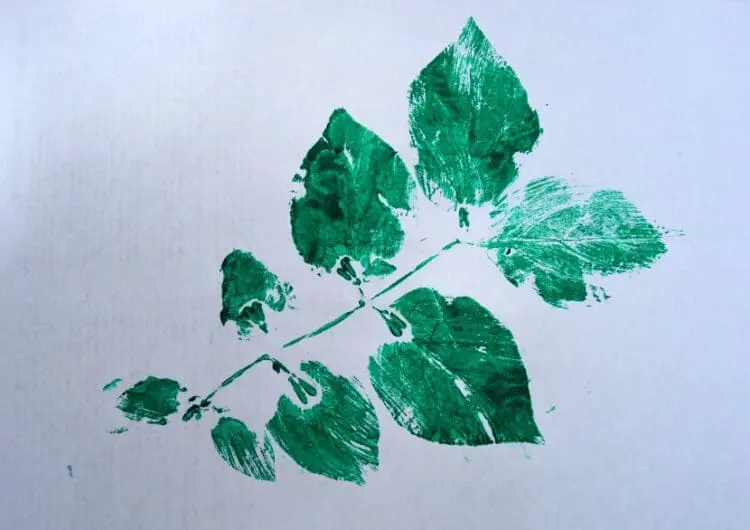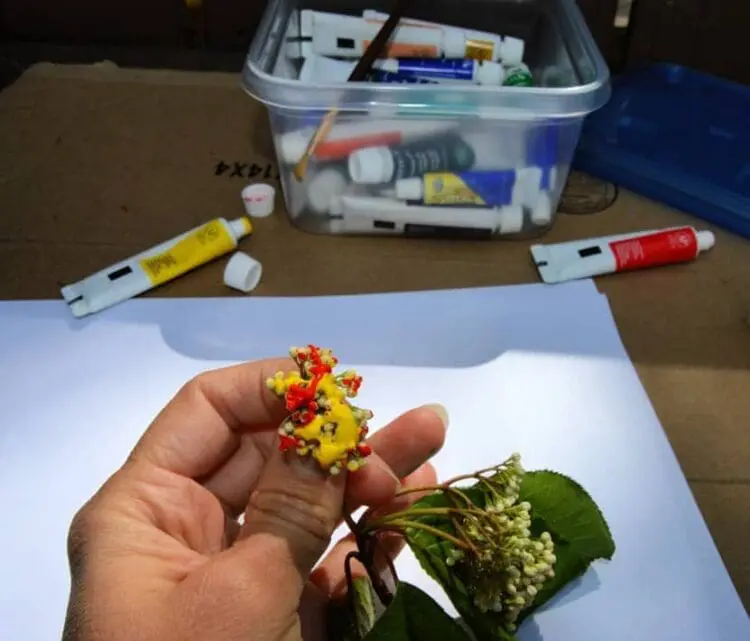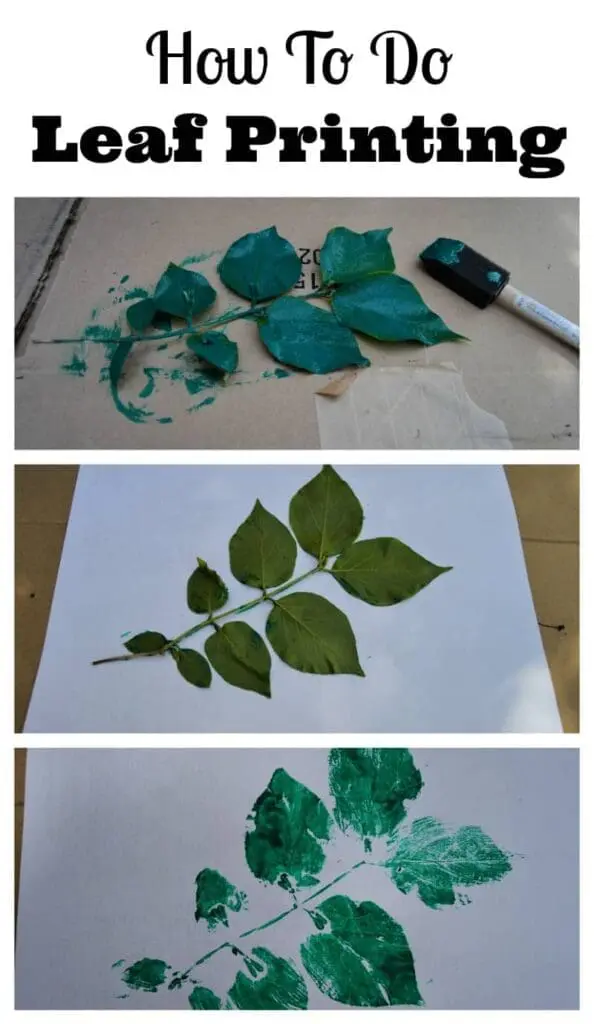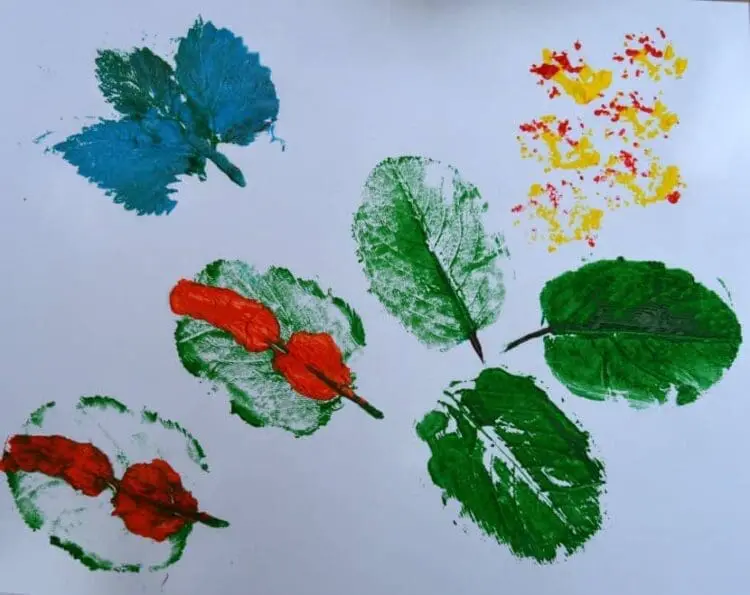This leaf printing nature craft is fun for adults and children. It can be directed at preschool children or the same principles and techniques can be refined to make classy wall art for adults and older children. Discover the art of leaf printing and learn how to create breathtaking prints using this unique technique. From selecting the perfect leaves to mastering the printing process, this blog post will guide you through every step to help you produce beautiful and nature-inspired artwork. We’ll even help troubleshoot common mistakes to help you overcome any challenges you may encounter along the way.

Leaf Print Tutorial
Are you ready to step into the enchanting world of leaf printing? Whether you’re a budding artist or simply looking to encourage creativity, mastering the art of leaf printing is a great way to add a touch of nature to your artwork. In this article, we’ll explore essential tips for beginners that will help you elevate your leaf print art.
Choosing the Perfect Leaves
The first step is get out into nature and find some fun leaf specimens. You might want to take a walk around a local park or if you have a big backyard, you may find plenty to work there. Look for unusual shaped leaves that will be pretty but also look for things that you have lots of for repetition. We have lots of honeysuckle so I didn’t feel bad taking a whole spring to use for my leaf printing. Flowers and buds can also be pretty. Look for windswept specimens first but if you have an abundance of a plant or flower feel free to pick a few.
Look for leaves that are intact, flat, and not too brittle. Leaves with interesting textures and defined veins tend to create the most striking prints. Additionally, consider the size of the leaves in relation to the size of your project – larger leaves can make a bold statement, while smaller leaves can add delicate details. Lightly brush off any debris that may affect the quality of your prints.

Leaf Printing Art & Craft Supplies:
- fresh leaves and or flowers
- several different colors of acrylic paint or finger paints for younger children
- paint brush or foam sponge brush
- sheets of paper (can use the back side of paper from your recycling bin for first attempts and experimentation)
- canvas or large nice quality paper for making wall art
- newspaper or cardboard (optional working surface)
How to Create Stunning Leaf Prints
Collect your craft and art supplies and head outside if it is not too windy. I always like to do a nature art project outdoors when possible. Cover your workspace with newspaper or cardboard. Lay out your supplies and a variety of shapes of leaves. Envision your art. This is a great craft for learning art techniques and finding out how quantity of paint affects the print.

Applying the Right Amount of Paint
Too much paint can cause your leaf prints to lose their intricate details, while too little paint may result in faint or incomplete prints. The key is to find a balance and practice until you achieve the desired results. Remember, the beauty of leaf printing lies in capturing the natural intricacies of the leaves themselves, so be mindful of how much paint you use. This careful application of paint to the entire leaf will help you create stunning leaf prints that showcase the unique characteristics of each leaf.

How To Make A Leaf Print
Experiment with paint colors and arrangements of leaves. Feel free to use the same leaves over and over for multiple prints. Paint or dip leaves into single paint colors or mix paint. Place leaf paint side down onto paper and press leaves and flowers firmly. You may even want to lay a book on top of a creation for a minute to make sure it gets a nice even press. Then pull the leaves away from the piece of paper to reveal your fresh leaf prints. Add another beautiful leaf print to your artwork or leave it solo. Allow to dry completely before hanging.
Troubleshooting Common Leaf Printing Mistakes
One common issue that beginners may face is not applying enough pressure when transferring the leaf onto the paper or fabric. To ensure a clear and crisp print, make sure to press down firmly on the leaf to ensure complete contact with the surface.
Another mistake to watch out for is using too much or too little paint when applying it to the leaf. Too much paint can result in a messy and blurry print, while too little paint may lead to a faint and incomplete design. Experiment with different amounts of paint until you find the right balance for achieving vibrant and detailed leaf prints.
Inconsistent pressure while rolling or pressing the leaf onto the surface can also cause smudges or uneven prints. Make sure to maintain a steady and even pressure throughout the printing process to create consistent and professional-looking results.
Lastly, choosing the wrong type of paper or fabric can impact the quality of your leaf prints. Opt for smooth, heavyweight paper or fabric that can absorb the paint well and hold the details of the leaf imprint. Avoid using thin or textured materials that may not provide a clear and defined print.

Leaf Print Art Conclusion
As you embark on your leaf printing journey, remember that the key to success lies in the details: from choosing the perfect leaves to experimenting with different textures, each step contributes to the creation of a truly unique piece of art. By following these tips for beginners, you will create stunning prints that showcase the beauty of nature. Embrace the process, embrace the imperfections, and most importantly, embrace your own creativity.
Not only can kids and adults learn art techniques as they did and paint and brush and imprint, they can also learn about nature. Talk to your kids about the materials you are using. Notice how differently leaves can be shaped. What is similar and what is different about the leaves you are using? Speculate on what different shapes and textures offer the plant. It is great to get them thinking about they way in adaptations may serve the plants. For example, some leaves are waxier while some leaves are sharp. It will be fun to see how many traits they can pick up on if they can think of how these traits may affect the plant’s survival.
My kids loved this project. I hope you enjoy this fun leaf printing activity from the gathering to the printing to discussion that surrounds it. Kids of all ages will enjoy this opportunity to make nature prints. Try a wide variety of leaves to find your favorites. Have you ever done leaf prints before?
Related Posts:

Tina says
Hello. Thanks for the tip to use thicker paper. It was such a fun project! I used a big leaf in the middle and small maple leaves around the edges.
United City says
Such a delightful read! Exploring the art of leaf printing is not only creatively fulfilling but also a wonderful way to connect with natural materials. This article beautifully captures the essence of this timeless craft, highlighting its simplicity and versatility. As someone who appreciates the beauty of nature-inspired art, I found the step-by-step guide and tips incredibly helpful for beginners like myself. Looking forward to experimenting with leaf shapes and adding a touch of natural beauty to my home decor! Keep up the fantastic work!
Francesca says
This article was a fantastic read! I appreciate the depth of information and the clear, concise way it was presented. I like that it is an easy craft for kids or can be perfected for teens and adults. It is fun to try making leaf prints with various leaf shapes.